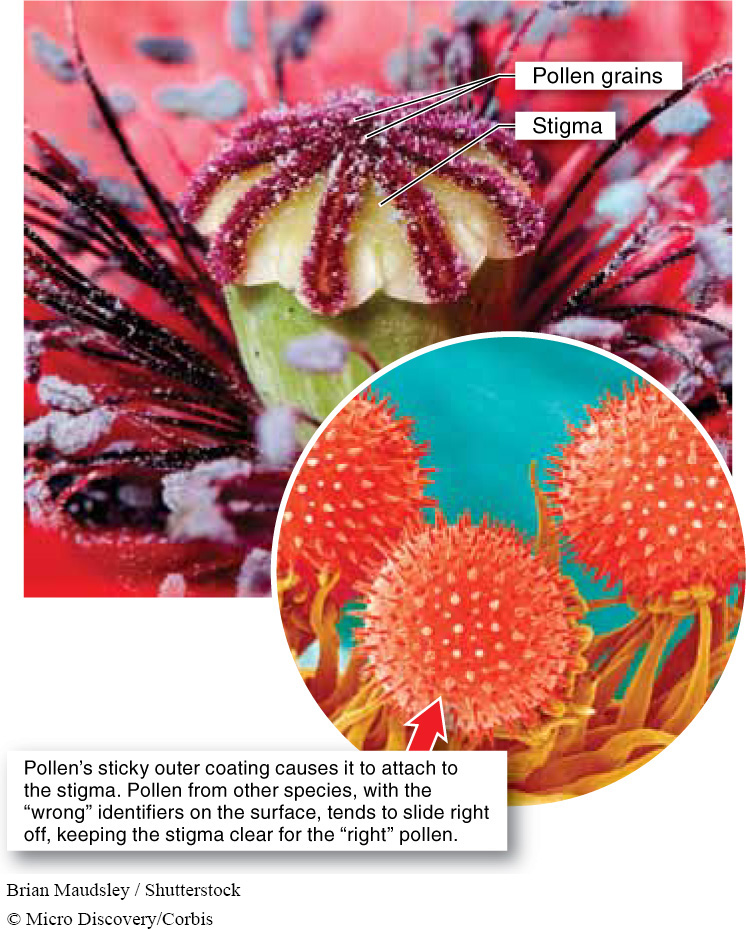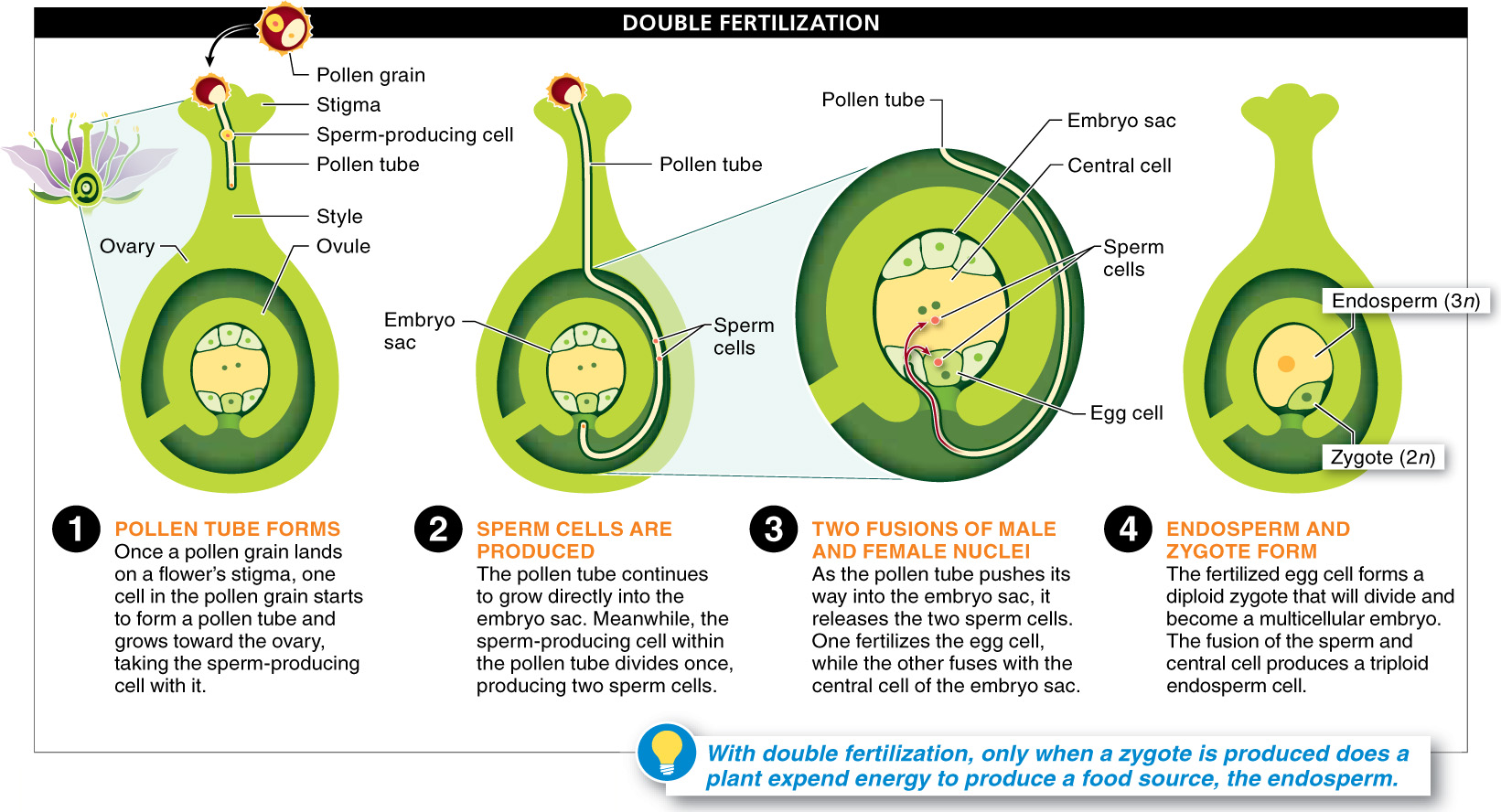Pollination is a bit like sexual intercourse in mammals: it brings the male and female gametes close to each other, but it isn’t quite fertilization. Fertilization requires that the male and female gametes fuse so that their genetic material can be combined. We examine here the male gamete’s last steps on its journey to the female gamete.
742
Recall that the pollen grain is made from two cells encased in a sticky, spiky wall. When the pollen grain lands on a stigma of a flower of its own species, it sticks to the stigma through interactions between the pollen grain’s outer coating and the cells of the stigma. Pollen grains from other species have the wrong identifiers on the surface and slide off the stigma easily, keeping it open to the “right” pollen grains (FIGURE 18-19).

Within 12–
If the pollen tube survives its journey down the style and into the ovule, it grows right into the embryo sac (FIGURE 18-20). Meanwhile, the sperm-

What happens with the other sperm cell? This cell fuses with the central cell of the embryo sac, which, as we learned earlier, has two haploid nuclei. This second fusion produces a triploid cell with three sets of genes. The triploid cell is called the endosperm. As the embryo starts to grow and divide, so, too, does the endosperm. It continues to do so at a high rate, turning into nutritional tissue that nourishes the developing embryo.
What part of the plant supplies the majority of calories to humans?
Because, in this fertilization, there are two separate fusions of male nuclei with female nuclei—
TAKE-HOME MESSAGE 18.9
Pollination is necessary but not sufficient for achieving fertilization. Following pollination, a pollen tube must grow down the style and into the ovule, during which time the sperm-
What is the benefit of cells of a flower's style destroying the tube cell of a closely related pollen grain?
This prevents self-pollination, which generates offspring with reduced genetic diversity. Genetic diversity is important in allowing a population to adapt to a changing environment.
743